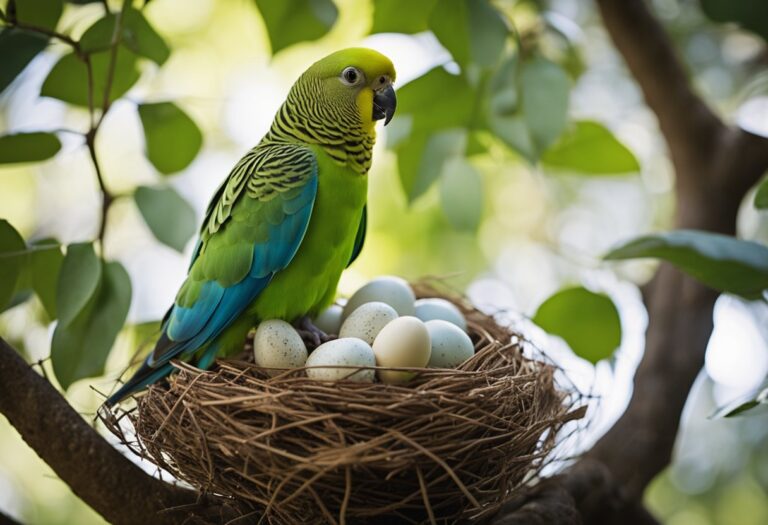Many people assume ducks can’t drown because they’re natural swimmers. I’ve found this is one of the biggest misconceptions about these water-loving birds. While ducks are excellent swimmers with waterproof feathers and specialized anatomy for aquatic life, they can indeed drown under certain circumstances.

I’ve seen firsthand how ducklings often die in swimming pools when they can’t find a way out. Even adult ducks can face trouble—whether from exhaustion, injury, or becoming trapped underwater. I was surprised to learn that adult ducks can drown despite their swimming adaptations.
This risk is especially concerning for domestic ducks. I’ve read reports where duck owners discovered their pets drowning in their own ponds. It’s particularly dangerous for ducklings who aren’t big enough to escape from water features without assistance.
Key Takeaways
- Ducks can drown despite their swimming abilities, especially when exhausted, injured, or trapped underwater.
- Ducklings face higher drowning risks because they lack the strength to exit steep-sided water features.
- Duck owners should provide easy exit ramps for all water features and monitor new ducks during their first swimming experiences.
Duck Behavior in Water

Ducks are naturally suited for water environments, but their relationship with water is more complex than many people realize. Their anatomy and behaviors have evolved specifically for aquatic life, though certain circumstances can put them at risk.
Ducks and Swimming Abilities
Ducks are excellent swimmers thanks to their waterproof feathers and webbed feet. Adult ducks have oil glands that produce a waterproof coating they spread across their feathers during preening. This oil creates a barrier that prevents water from saturating their down feathers.
I’ve observed that most healthy adult ducks can swim for hours without issues. They flirt and play in water, with drakes (male ducks) often rising up, shaking their tails and heads, or flicking water as part of their natural behavior.
Wild ducks regularly dive for food, using their feet and wings to propel themselves underwater. They can control their buoyancy by trapping or releasing air in their feathers and air sacs.
Risks Leading to Drowning
Despite their swimming prowess, ducks can drown under certain conditions. Ducklings are particularly vulnerable because they aren’t fully feathered and lack the waterproofing of adult ducks. Their down can become waterlogged, causing them to sink.
Young ducklings should never be left unsupervised in water. They need assistance getting out of pools until they’re big enough to exit on their own.
Even adult ducks can face dangers in water. I’ve learned that exhaustion, illness, or injury can impair their swimming abilities. Some duck owners report that water time for young ducks should be limited to 10-15 minutes to prevent saturation of their down.
In rare cases, ducks may become entangled in underwater vegetation or debris. Some hunters have reported instances where ducks dive and spin themselves in plants at the bottom, potentially leading to drowning.
Best Practices for Raising Healthy Ducks
Raising healthy ducks requires attention to their environment, diet, and specific care needs. I’ve found these elements make all the difference between struggling ducklings and thriving adult birds.
Optimizing the Duck Brooder Environment
When I set up a brooder for ducklings, I make sure the temperature starts at 90°F in the first week, then decreases by 5°F weekly until they’re fully feathered. A thermometer is essential for monitoring this.
I never leave ducklings unsupervised with water deeper than their nostrils until they’re fully feathered. Ducklings can drown if they flip over in deep water. I use shallow dishes with marbles or small stones in the bottom to prevent accidents.
The bedding I choose is crucial – pine shavings work well, but I avoid cedar which can cause respiratory issues. I change it frequently as ducks create more mess than chickens.
For lighting, I provide 16 hours of light and 8 hours of darkness to mimic natural conditions. This helps regulate their growth and development.
Dietary Needs and Supplements for Ducks
Ducks are omnivores with specific nutritional requirements. I feed my ducklings a starter feed with 18-20% protein for the first 2-3 weeks.
Niacin is extremely important! I supplement their diet with brewer’s yeast (1 tablespoon per cup of feed) as ducks need more niacin than chickens. Signs of deficiency include leg problems and slow growth.
My adult ducks thrive on:
- Waterfowl pellets (16-18% protein)
- Fresh greens like dandelion greens and lettuce
- Garden vegetables
- Occasional treats of mealworms or crushed eggshells
I always provide grit in a separate container since it’s essential for their digestion. Ducklings must have drinking water 24/7 to prevent choking and aid digestion.
Common Questions on Duck Care
Do ducks need swimming water? While not essential for survival, I’ve found that keeping ducks happy and healthy means providing some swimming water. Even a kiddie pool works well for my Pekin ducks.
How much space do ducks need? I provide at least 4-5 square feet per duck in their coop and 10-15 square feet in their run. More space means less stress and cleaner conditions.
When do ducks start laying eggs? My female ducks typically begin laying eggs around 5-6 months of age. Duck eggs are larger than chicken eggs and excellent for baking due to their higher fat content.
Do ducks need a coop? Yes! I ensure my ducks have a predator-proof shelter that’s dry and draft-free. Unlike chickens, they’re content sleeping on clean straw rather than roosting on bars.
Frequently Asked Questions
Duck drowning risks vary by age, conditions, and circumstances. While ducks are naturally excellent swimmers, they face specific challenges that can lead to drowning in certain situations.
How long can ducks hold their breath underwater?
Adult ducks can typically hold their breath underwater for 10-15 seconds during normal diving behavior. When feeding or escaping predators, some duck species can stay submerged for up to 60 seconds.
Wild diving ducks like mergansers and buffleheads have evolved to remain underwater longer, sometimes reaching depths of 10-20 feet while foraging.
I’ve observed that domesticated ducks generally have shorter underwater times than their wild counterparts. They prefer to dip just their heads beneath the surface rather than fully submerging their bodies.
Do ducks face risks of drowning during mating?
Yes, female ducks can face drowning risks during mating. Male ducks sometimes force females underwater during mating, which can lead to drowning if multiple males are involved.
During breeding season, male-to-female ratios that heavily favor males increase these risks. Female ducks can become exhausted trying to escape persistent males.
I recommend monitoring duck groups during breeding season, especially in confined spaces like backyard ponds, to prevent potential drowning incidents.
What measures can be taken to prevent ducklings from drowning?
Ducklings must be supervised when swimming until they are fully feathered. They lack the waterproofing oils of adult ducks and can easily become waterlogged.
Provide gentle slopes or ramps in water features so ducklings can exit easily. In swimming pools, this is especially important as the high sides can trap exhausted ducklings.
I suggest keeping water dishes shallow for very young ducklings. Only 1-2 inches of water allows them to dip their bills while preventing drowning risks.
How can adult ducks cope with extensive periods in water?
Adult ducks have specialized feathers and preen glands that produce oils to maintain waterproofing. They regularly preen to distribute these oils, keeping water from penetrating their down layer.
Healthy ducks will rotate between swimming and resting on land. This helps them conserve energy and maintain body temperature during extended water exposure.
I find that providing floating platforms in deeper ponds allows ducks to rest without returning to shore, reducing their energy expenditure during long swimming periods.
Is it possible for ducks to get waterlogged and what are the consequences?
Yes, ducks can become waterlogged if their feathers lose waterproofing. This occurs with oil gland problems, environmental contaminants, or injuries that affect preening ability.
Waterlogged feathers lead to hypothermia as cold water reaches their skin. The added weight also makes swimming difficult and can lead to exhaustion.
I’ve seen that sick or injured ducks are particularly vulnerable to waterlogging. They may lack the energy to maintain proper preening, creating a dangerous cycle.
What situations might lead to a duck drowning?
Baby ducks will drown if they paddle until exhausted without an easy exit point. Their undeveloped feathers and weaker swimming abilities make them vulnerable.
Extreme weather like storms or frozen water surfaces can trap ducks or prevent them from maintaining normal swimming patterns.
I’ve noted that predator attacks can indirectly cause drowning if ducks are injured or forced to remain underwater beyond their breath-holding capacity.






